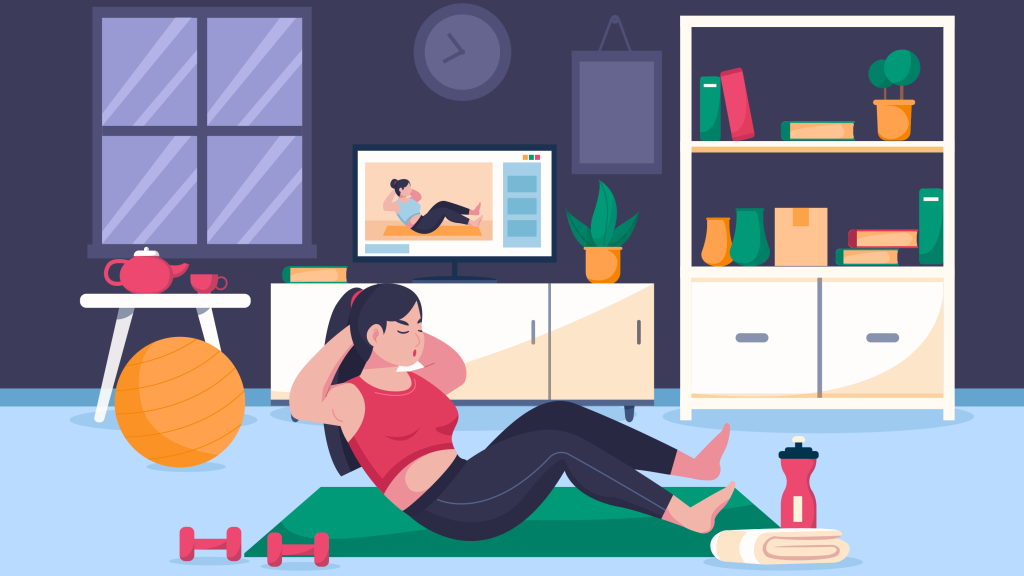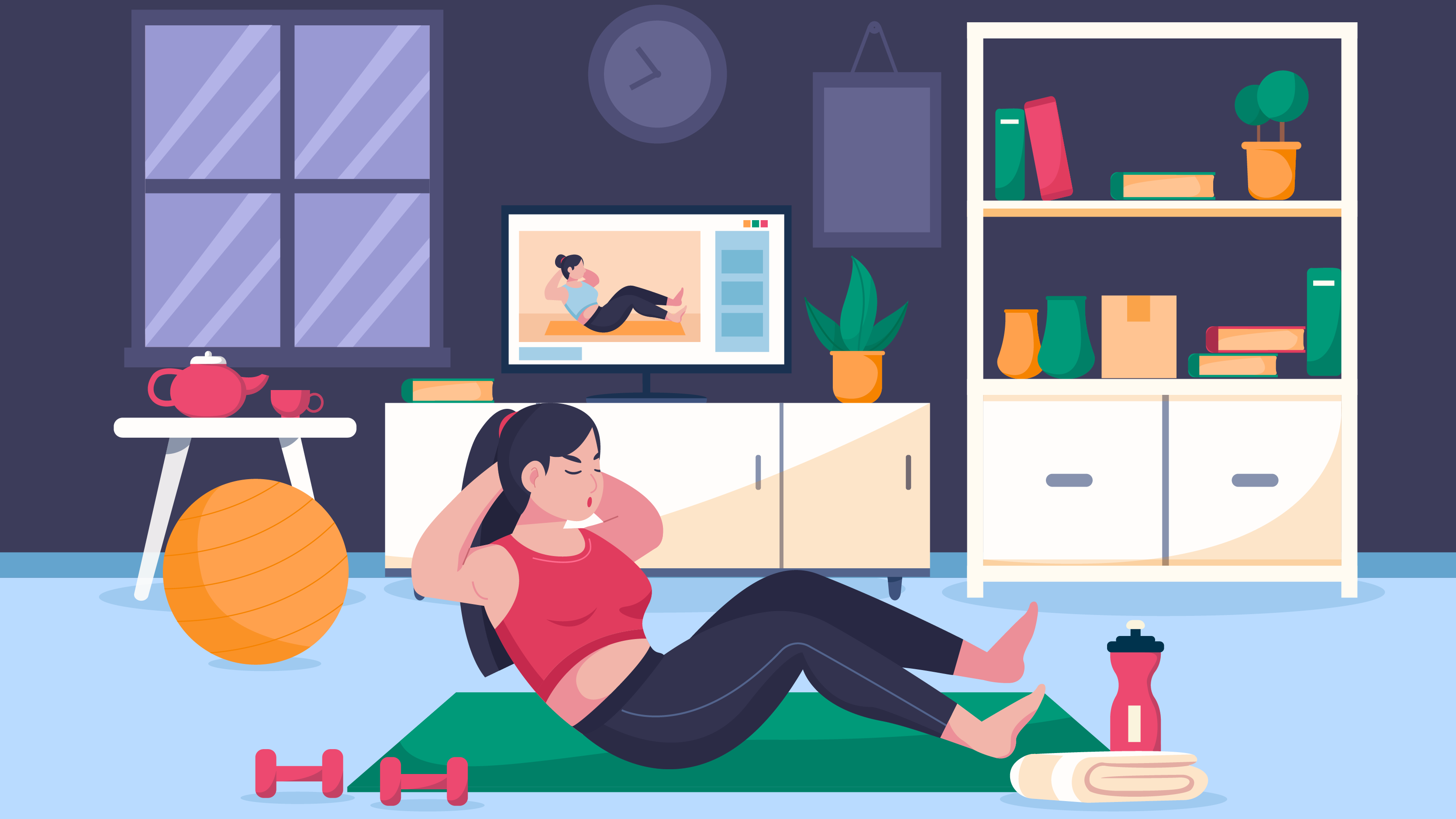
What Are Abs?
The term “Abs,” which is an abbreviation for “Abdominals,” refers to a collection of muscles in the human body that form the core. These muscles play an important role in maintaining stability, supporting the spine, and permitting a variety of activities. The abdominal group’s primary muscles include the rectus abdominis, which runs vertically down the front of the abdomen and is responsible for flexing the spine, the external obliques, which are located on the sides of the abdomen and aid in rotation and lateral flexion, and the internal obliques, which are located beneath the external obliques and aid in the same movements.
Read More – The Impact Of Diet On Cholesterol Levels: Myths And Facts
The deep-lying transverse abdominis muscle works as a natural corset, stabilizing the spine and internal organs. Abdominal muscle strengthening and toning can improve posture, minimize the risk of lower back discomfort, and increase overall functional fitness. Planks, sit-ups, and leg raises are popular core workouts for sculpting a tight and toned abdomen. A strong core is not only attractive, but it is also necessary for keeping a healthy, well-balanced body and avoiding injury.
10 Abs Workouts You Can Do At Home
1. Crunches
Crunches are a tried-and-true abdominal workout. Lie on your back with your knees bent and your feet flat on the floor to perform them. Place your hands behind your head or cross your chest lightly, but don’t pull on your neck. Engage your core muscles, then lift your head and shoulders off the ground while maintaining your lower back firmly against the floor. Exhale as you crunch up, keeping your chin slightly tucked to minimize stressing your neck.
Inhale as you return your upper body to its original position. This activity focuses on the rectus abdominis, the front half of your abdominal muscles, which helps to build and tone your core. To enhance the efficacy of the exercise, aim for controlled repetitions rather than employing momentum.
2. Leg Raises
Leg lifts are an excellent workout for building lower abdominal strength. To begin performing leg lifts, lie flat on your back with your legs outstretched. For stability, place your hands, palms down, beneath your hips, or by your sides. Keep your lower back pressed firmly on the floor by using your core muscles. Lift your legs off the ground with steady motions, making sure they are straight and your toes point upward. Raise your legs until they make a 90-degree angle with your body, or as high as you can while keeping proper form.
Slowly drop your legs back down while maintaining your core engaged to avoid arching your back. Leg raises work the lower rectus abdominis, which helps to develop a balanced and contoured core. To prevent hurting your lower back and maximize the efficiency of this exercise, avoid swinging or utilizing momentum. Instead, focus on moderate motions.
3. Planks
Planks are a basic and extremely effective core-strengthening exercise that you can practice at home with no equipment. Begin in a push-up posture, but instead of using your hands to support your weight, rest your weight on your forearms. Maintain a straight line with your elbows beneath your shoulders. Engage your core and glutes to keep a straight line from your head to your heels. Allowing your hips to droop or pushing up too high can reduce the efficacy of the workout.
Hold the plank position for as long as you can, focusing on perfect technique and steady breathing. Planks work the whole core, including the rectus abdominis, obliques, and transverse abdominis, and can aid with core stability and endurance. Increase your plank duration gradually over time to keep your core muscles challenged.
4. Bicycle Crunches
Bicycle crunches are a dynamic abdominal exercise that works both the rectus abdominis and the obliques, making it a good choice for a full-core workout. Begin by laying flat on your back with your hands softly supporting your head, fingers interlaced behind your neck, and your legs elevated off the ground to complete bicycle crunches. Bring your right knee up to your chest while rotating your upper body to the left and bringing your left elbow up to your right knee.
Extend your right leg out while bringing your left knee towards your chest, and twist your upper body in the opposite direction, so your right elbow approaches your left knee. Continue this pedaling motion, mimicking riding a bicycle while maintaining a controlled pace and ensuring your shoulder blades are lifted off the ground throughout the exercise.
5. Russian Twists
Russian twists are an excellent workout for strengthening your oblique muscles and improving core stability. To begin Russian twists, sit on the floor with your knees bent, feet flat, and back slightly leaning (creating a V-shape with your torso and thighs). Hold a weight or a household object at chest level with both hands. To keep your balance, engage your core muscles and shift your body to one side, putting the weight or item close to the floor alongside your hip. Return to the middle, then oppositely twist to the other side.
This twisting action engages the oblique muscles that run down the sides of your abdomen. The exercise requires your core muscles to stabilize your body as you move, which can enhance overall core strength and definition. As you gain experience, you may make the exercise more challenging by using a larger weight or lifting your feet off the ground.
6. Mountain Climbers
Mountain climbers are a full-body, dynamic workout that also works the core muscles. Begin in a push-up posture with your hands directly behind your shoulders to execute mountain climbers. From your head to your heels, your body should make a straight line. Engage your core and alternate bringing your knees towards your chest in a rapid and controlled action, as if you were running in place while in a plank posture.
To maximize the benefits of the exercise and avoid unnecessary pressure on your lower back, adopt a steady tempo and keep your hips level throughout. Mountain climbers engage your rectus abdominis while simultaneously increasing your heart rate, making them a fantastic choice for core building and cardiovascular conditioning.
7. V-Ups
V-ups are a high-intensity core workout that targets the rectus abdominis and lower abdominal muscles. Lay flat on your back with your arms stretched above and your legs straight to execute V-Ups. Lift your upper body and legs at the same time, producing a V-shape with your body. Reach your hands towards your feet, attempting to touch or get as near to touching your toes as possible while maintaining your legs straight. Maintain balance and control by keeping your core engaged throughout.
Complete one repeat by lowering your upper body and legs with control. V-ups are a difficult workout that needs both strength and flexibility, and they may aid in the development of a well-defined and toned core. Begin with a moderate amount of repetitions and progressively increase the intensity and reps as your core strength increases. To prevent hurting your lower back and get the most out of this exercise, use proper technique.
8. Side Planks
Side planks are an excellent exercise for strengthening the oblique muscles and improving core stability. Begin by lying on your side, with your elbow just under your shoulder and your legs outstretched. Create a straight line from your head to your feet by lifting your hips off the ground. Maintain this straight alignment by engaging your core and holding the posture for as long as you can, focusing on perfect form and breathing steadily. After that, switch sides and do side planks on both sides to guarantee balanced growth. Side planks are an excellent approach to develop the muscles responsible for lateral flexion and rotation, as well as to enhance general core stability.
As you advance, you may lengthen your side plank holds to continue working your oblique muscles and strengthening your core.
9. Reverse Crunches
Reverse crunches are an excellent workout for strengthening the lower abdominal muscles. Begin by lying on your back with your knees bent and your feet flat on the floor to execute reverse crunches. For further support, place your hands at your sides or under your hips. Engage your core muscles, then pull your knees towards your chest while maintaining your feet flat on the ground. Lift your hips and drop your back off the ground in a reverse arc action.
Slowly drop your hips and lower back to the ground, keeping your motions controlled throughout. Reverse crunches target the bottom section of your rectus abdominis and are great for developing the muscles that need extra attention for a well-rounded and toned core. To maximize the efficacy of this exercise and prevent hurting your lower back, focus on engaging your abdominal muscles rather than swinging your legs.
10. Flutter Kicks
Flutter kicks are an excellent way to target the lower abdominal muscles. Begin by lying on your back with your legs outstretched to execute flutter kicks. For support, place your hands, palms down, beneath your hips. Keep your lower back pushed towards the floor by engaging your core. Lift your heels off the ground slightly, then alternately kick your legs up and down in a fluttering motion, maintaining your legs as straight as possible.
Maintain a constant pace by focusing on controlled motions and avoiding letting your feet touch the ground. Flutter kicks work the bottom section of the rectus abdominis and is a good exercise for developing lower abdominal strength, which contributes to a more balanced and well-defined core. To reduce strain and maximize efficacy, remember to complete this exercise with perfect form and avoid arching your back.
Conclusion
Finally, these ten at-home ab workouts offer a broad range of exercises that target various portions of your core muscles, ranging from the rectus abdominis to the obliques and lower abdominals. Whether you’re a novice or a seasoned athlete, these workouts will help you strengthen and tone your core. Remember that consistency is essential for seeing outcomes. To minimize injury and maximize efficacy, these exercises must be performed in the appropriate form.
Read More – Daily Care Routine During Pregnancy That A To Be Mother Should Follow
Increasing the intensity and repetitions progressively as your core strength increases can also help you create a well-rounded and powerful midsection. Combining these routines with a healthy diet and a thorough fitness regimen will help you achieve your overall health and fitness objectives. Before beginning a new workout plan, always listen to your body and check with a fitness expert or healthcare practitioner if you have any concerns or underlying health issues.
Read More – Genetics And Cholesterol



